Five Health Benefits Of Apples
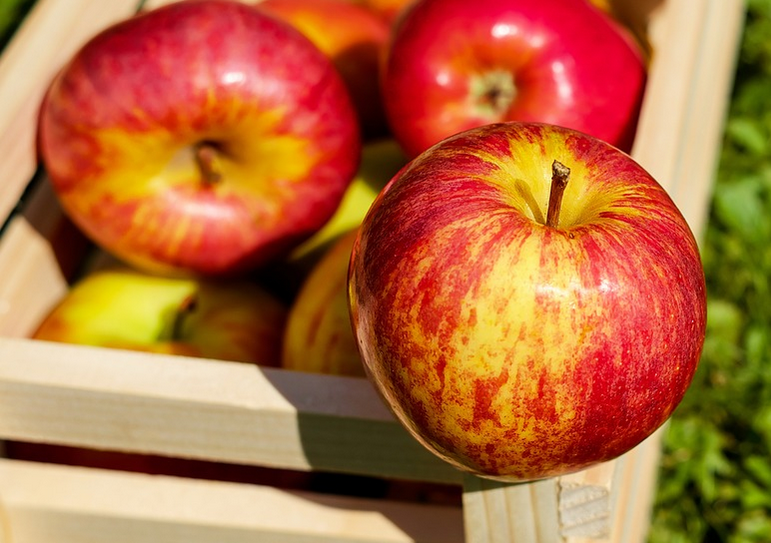
After reading this post, I hope you’ll gain a bigger appetite for apples. Here’s a few reasons why you should eat more apples…
Apples are versatile, portable, inexpensive, and unlike a lot of other fruit, they store well. They also have quite a few surprising health benefits. There’s good reason why we have the saying “An Apple A Day Keeps The Doctor Away”.
Here’s some benefit from eating apples regularly.
Apples Can Help You Lose Weight Safely
Apples make a great snack and are low in calories with only about 90 calories for a medium apple. This humble little fruit is also packed full of fiber and includes a lot of water. Both of these sources help you stay fuller longer. Start eating an apple each day for a snack (with a little protein on the side such as a few almonds) to see if you start feeling less hungry in between meals.
Apples Can Lower Your Risk For Heart Disease
The fiber in apples is soluble fiber. This is a great substance that will help lower cholesterol. It works the same way that bowl of oatmeal you have for breakfast.
Apples May Be One Key For Reducing Your Risk For Diabetes and Metabolic Syndrome
People who eat apples on a regular basis, have a lower risk for developing diabetes and metabolic syndrome. Part of that is due to the fact that the fiber in apples keeps us full longer and we’re less likely to gain weight – a major risk factor for both of these medical issues. The other part is phytonutrients that we don’t quite completely understand. Yet, antioxidants and other nutrients in apples seem to have a positive effect on our body and how it processes food.
Apples Boost Your Immune System
Apples are packed with vitamin C which as you know helps boost your immune system and fight off infection. That’s why you’re told to take vitamin C or drink orange juice when you feel a cold coming on. As it turns out, apples are vitamin C power houses. Eat one per day during cold and flu season to give your immune system that extra boost to make it through without getting sick.
Apples Reduce Risks for Certain Cancers (antioxidants and soluble fiber)
Apples may even help you prevent cancer. That’s pretty amazing for one little humble fruit. Apples like many other fresh fruits and vegetables are packed with antioxidants. Those little compounds attach themselves and neutralize cancer-causing free radicals. The soluble fiber in apples helps keep your digestive system in order, possibly preventing the dangerous colon cancer.
Featured product: Red Apple Hand Cream
Fun Fall Activity – Go Apple Picking

There’s just something about cooler temperatures and watching the leaves turn color during fall. Of course, it’s also time for all of our favorite fall treats. Many of my favorite fruits and vegetables start to ripen and get ready in early fall. Let me tell you, it isn’t just about all things pumpkin. It’s also about apples.
If you’re looking for a fun fall activity you can do with the whole family on a crisp and sunny day, try apple picking. It’s a fun way to get everyone out of the house and in the fresh air. As an added bonus, you get to come home with a big crate of apples that will last you through the coming months.
Start by finding a local apple orchard that lets you come out and pick your own apples. Depending on where you live, you may be able to find several apple farms just outside town, or you may have to take a little drive. The Pick Your Own website at http://www.pickyourown.org/ is a great resource for helping you find apple orchards in your area.
Once you find an orchard you’re interested in, give them a call and find out what apple varieties they have and which ones are ready. This is also a great time to learn more about the best times to come pick and what other fun attractions and activities they may have available.
If you’re not familiar with the apple varieties they have available, do a little research and find out what those apples are like. You should be able to get a good idea about flavor, firmness, what the apples are best used for (eating apples vs. baking apples for example), and how long they can be stored. This is good information to have ahead of time. It also allows you to plan what varieties you want to pick and in what quantities.
Last but not least, it’s time to head out to the farm and have fun. Get an early start and get to picking apples. Don’t forget to taste them as you go along and have fun. It’s an experience and a great time to not only make family memories, but also teach your kids about where their food comes from.
Enjoy your day at the apple orchard and everything they have to offer. If you’re fortunate, there may be hay rides and lots of tasty apple treats to sample and buy. You may even get to help make apple cider or learn more about Johnny Appleseed.
Explore the various apple orchards your region has to offer and find a few favorites that you can visit fall after fall. Then come home with your crates of apples and enjoy them all throughout fall and winter.
Let’s Talk Apple Varieties
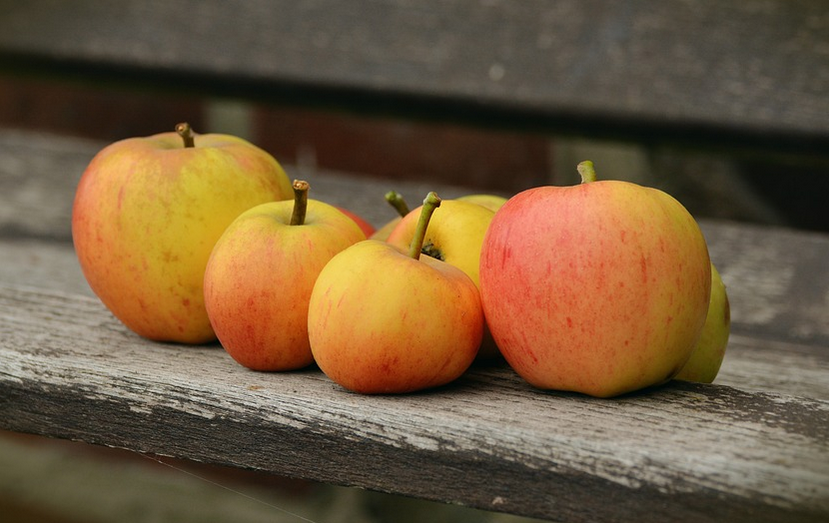
When you head to your local apple orchard, or even a well-stocked grocery store, you’ll find all sorts of different and interesting apple varieties. Some are perfect for eating as is, while others lend themselves to baking, cooking with, making apple sauce and the likes. Of course, some varieties store better than others.
Here’s a quick overview of some of the more common varieties of apples…
Crispin Apples
Crispin’s are large apples with a yellow-green skin. With their sweet flavor, these crisp yet juicy apples are perfect for baking pies and making apple sauce.
Empire Apples
Empires are a cross between McIntosh and Red Delicious. This is a great apple that works for just about anything including baking. They are also delicious freeze well.
Gala Apples
Gala apples are great for eating and to make apple sauce. Don’t try to bake with these apples. They tend to fall apart when you cook them.
Golden Delicious
These apples keep their shape well during baking, making them perfect for pies. They are also delicious eating apples that store well.
Granny Smith
This is one of the most popular apples around and for good reason. They are perfect for eating raw and hold up well in pies and crisps. You may want to add a little extra sugar (preferred natural sweetener) or honey to balance out the tart flavor of these green apples.
Honeycrisp
This is a fairly new apple variety that’s crisp and juicy. As you bite into these apples you’ll notice a light honey flavor.
Ida Red
This is a very old apple variety. Ida Reds keep their shape during baking and even freeze well. Perfect for using them for baking and in apple sauce.
Jonagold
These apples are a blend of Jonathan and Golden Delicious apples. They are best eaten fresh or used in apple sauce.
Jonathan
Jonathan apples are anther variety that’s perfect for baking pies and cakes. They hold their shape well and have a nice crisp flavor.
McIntosh
This is another apple that’s best eaten fresh from the tree. They don’t hold up well to baking, but make delicious apple sauce.
Red Delicious
Like the McIntosh apples, this is another variety that’s best used for eating.
Winesap
This is a firm but sweet apple that holds up well in baking and makes a great addition to your apple sauce as well.
Give these different apple varieties a try and find your own favorites for eating, storing, baking, and cooking. Of course you can mix and match, particularly when you’re making pie fillings or apple sauce.
How to Store Apples
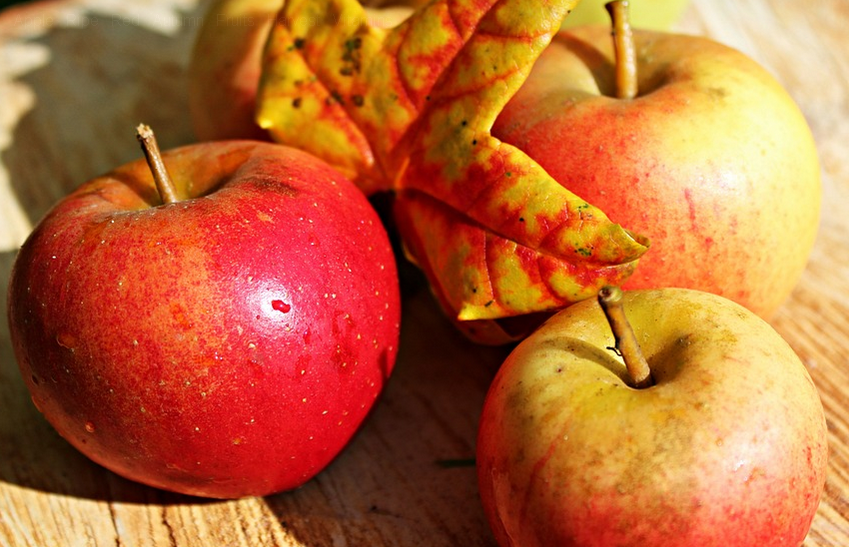
While you can certainly get apples year around at your local grocery store, fall is when they really come into abundance. You can find the tastiest, freshest apples from September through November and you can find some great deal – particularly when you buy local or grow your own. The problem then is, of course, how to best store all those apples once you get them home.
Here’s some tips and ideas on how to store all those apples…
Start by checking every single apple for bruising or rot. A single rotting apple stored with the rest will cause all your apples to ripen, and then over-ripen quickly. Only healthy apples that don’t have nicks or bruises and aren’t too ripe yet should be stored. Sort out the rest and use them for eating, baking, and cooking with right away. You can also preserve those apples by turning them into apple sauce or apple pie filling and canning or freezing the finished product as needed.
Sort your apples by variety, and then by size. Larger apples will go bad faster than others and different apple varieties have different shelf lives. You want to be able to eat and use the apples that will go bad faster first. Keep the smaller apples of long lasting varieties for last and you’ll have fresh and delicious apples well into winter and even early spring. Tart, thick-skinned apples usually last the longest. Keep that in mind as you pick different apple varieties.
Don’t store your apples in plastic. Instead choose crates or baskets that allow the fruit to breath. Apples emit ethylene, a gas that helps ripen fruit. You want the air to flow around your apples and allow excess ethylene to escape otherwise your apples will ripen and rot much faster. You may have heard of this principle in action when you put an apple in a brown bag with green bananas to encourage them to ripen faster. If you’re storing apples, you want to slow down that ripening process.
Store the crates or baskets of apples in a dark, cool place. Basements are great, provided they are dry and get good air flow. Your pantry is another good option. Store your apples away from onions and potatoes for best results. If you are only storing a small amount of apples, the crisper drawer in your fridge is another good option.
Inspect your apples regularly and pick out any fruit that’s starting to rot. This will prevent all your apples from going bad. Get in the habit of inspecting your apple harvest once a week, or anytime to dig in to pick fresh apples for eating.
Make Your Own Applesauce and Apple Butter
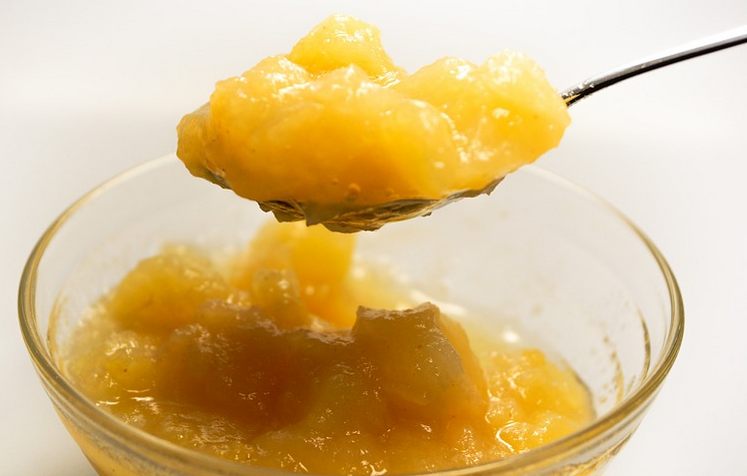
While apple pies and apple crisps are amazing, they should only be consumed in moderation. What are you to do then when you have an overabundance of apples? Make your own applesauce and apple butter, of course, and use it throughout the year.
Both applesauce and apple butter are easy to make and easy to can. Canning allows you to store them for up to year and the jars won’t take up precious space in your fridge or freezer. As an added bonus, your homemade versions will be healthier and tastier than what you can find at the grocery store. You get to customize your apple preserves to your family’s taste and you know exactly what goes into each jar. Ready to give it a try?
Homemade Apple Sauce
8 medium apples
1.5 cups of water
½ cup of sugar (adjust as needed)
1 tsp ground cinnamon (optional)
Start by washing, peeling and coring your apples. Chop them into bite-sized chunks and add them to a large saucepan. Add the remaining ingredients.
This is the apple peeler I use.
The sugar is variable. Start by adding half of it, unless you’re dealing with tart apples. Taste your apple sauce and add more towards the end. The cinnamon is optional. If you like cinnamon in your applesauce, add it, if not, feel free to leave it out. Of course you can also use more or less according to taste.
Bring the apple mixture to a simmer and cook covered on medium heat until the apples are soft. This should take about 15 to 20 minutes depending on the size of your chunks and the apple variety.
Mash it into apple sauce with a potato masher, a fork, or an immersion blender.
For you that are avoiding sugar (like I am) I recommend using Stevia… here’s a crockpot recipe to try:
Easy Crockpot Applesauce with Stevia
Homemade Apple Butter
Apple butter cooks slow and low. The easiest way to prepare it is in the slow cooker. Here’s what you need:
4 pounds of apples
3 cups of sugar (or stevia to preferred sweetness)
2 tsp cinnamon
Pinch of ground cloves
Pinch of salt
Start by peeling, coring and chopping your apples. Put them in the slow cooker. Mix the sugar, salt and spices and pour them over the apples. Put the lid on and cook the mixture on high for one hour. Turn the slow cooker to low and cook it an additional 10 hours. Stir it occasionally. Your apple butter is ready when it is brown and starts to thicken.
3 Fun Ways to Cook and Bake with Apples
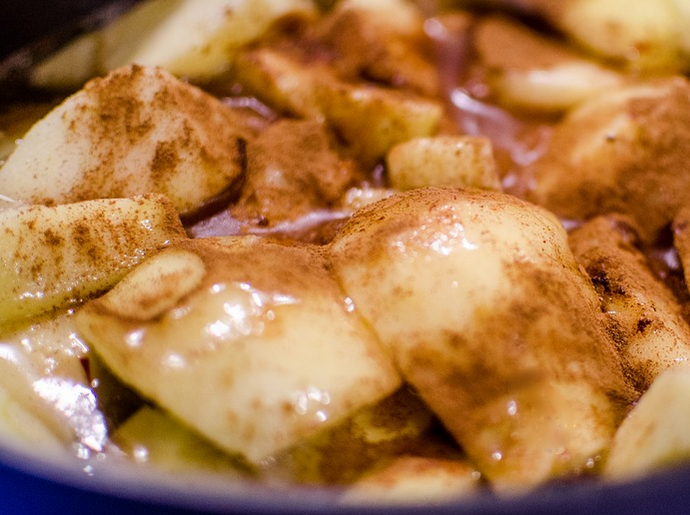
Fall is apple time. You can find all sorts of delicious varieties in your local stores, farmers markets, or even fresh from the orchard. With this overabundance of these delicious fruits, let’s talk about some fun ways to cook and bake with apples.
Apple Fritters
• 1 pound of apples
• 1 1/2 cups all-purpose flour
• 1 tbsp. sugar
• 2 tsp baking powder
• pinch of salt
• 2/3 cup of milk
• 2 eggs
• 1 tbsp. oil plus oil for frying
• Optional: Cinnamon Sugar
Start by peeling, coring, and chopping your apples. Set them aside.
Heat the oil for frying to about 375F.
Combine the flour, sugar, baking powder and salt in a large bowl. Whisk the milk, eggs and 1 tbsp. of oil in a smaller bowl until well combined. Pour this wet mixture into the large bowl and mix until your batter is well combined. Fold in the apple pieces.
Drop the apple batter into the hot oil by the spoonful and fry until golden brown. Don’t overcrowd the pot and give the oil a chance to heat back up between batches. Remove the fritters and drain them on a plate lined with paper towels. Toss in the cinnamon sugar as soon as the fritters are cool enough to handle and enjoy while warm.
*Here’s a recipe that’s low carb and gluten free….
Apple Fritters (low carb, gluten free)
Baked Apples
• 4 large apples
• 1/2 cup of brown sugar
• 4 tbsp. butter
• 2 tsp cinnamon
Preheat your oven to 350 degrees F.
Wash your apples, and using a melon baller scoop out the core of the apples from the top, creating a whole. Be careful not to scoop all the way to the bottom. You don’t want your filling to leak.
Gently spoon two tbsps. of brown sugar in each apple, top with 1 tbsp. of butter and sprinkle with cinnamon. Place the filled apples into a shallow baking dish.
Bake for 15 minutes or until the apples are tender. The sugar and butter will melt together, and start to caramelize. Remove from the oven and allow to cool slightly before serving.
Apples And Pork Chops
• 6 pork chops
• Salt and pepper to taste
• 4 apples
• 2 tbsp butter
• 1/4 c. brown sugar
• 1 tsp cinnamon
Preheat the oven to 350F.
Melt the butter in an oven-proof skillet. A cast iron pan works really well for this. Season the pork chops with salt and pepper and brown on both sides.
In the meantime, peel, core, and slice the apples. Lay them on top of and around the pork chops in the pan. Combine the brown sugar and cinnamon. Sprinkle this mixture evenly over the apples.
Cover everything with foil and bake for 90 minutes.
How to Make Your Own Apple Cider

Is there anything better on a lovely day in fall than a glass of fresh pressed apple cider? This popular, all-American beverage is surprisingly easy to make at home when you’re blessed with no overabundance of fresh apples.
Here’s how to make fresh apple cider in your kitchen at home. Grab about ten to twelve apples, wash them, and cut them into quarters. Put them into a large stockpot and add enough water to cover them with several inches of water on top. Add a scant cup of sugar, one tablespoon of ground cinnamon, one tablespoon of ground allspice, and a pinch of salt. The sugar amount is an estimate. Use more if you’re using very tart apples, less for sweeter varieties. You can also adjust the amount of sugar as you cook your cider.
Bring the mixture to a boil and cook, uncovered for 45 minutes. Turn it to a simmer, cover, and allow your cider to cook for another two hours. Allow the mixture to cool slightly to make it safer to handle. Gently pour it through a strainer to remove the big apple chunks. Strain it again through a cheese cloth to remove the remaining solids. The end result is your apple cider.
From here you have a couple of different options. You can cool it in the fridge and serve it as fresh, cold apple cider. *Use it up over the course of a few days, before potentially harmful bacteria can develop.
Since the cider is still warm, you can turn it into mulled cider. Pour the finished apple cider into a saucepan with additional cinnamon, allspice, nutmeg, and cloves to taste and simmer for about 20 minutes. Pour it into mugs and add a slice of orange. This is the perfect hot drink on a cold fall or early winter day.
What is Apple Cider Vinegar and How to Use it
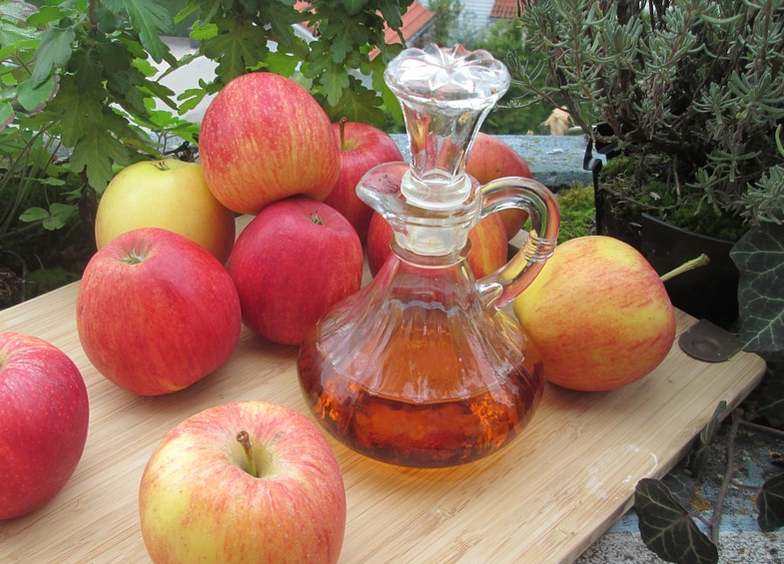
Apple cider vinegar has been used for centuries to in cooking and various other home purposes. In recent years it’s become popular because of various health benefits. Let’s talk about Apple Cider Vinegar (ACV) and how you can start using it at home.
What Exactly Is Apple Cider Vinegar?
This is a vinegar made from apple cider. It has a pale amber color, a strong vinegar taste with just a hint of apple. In grocery stores today you can get filtered, pasteurized apple cider vinegar, as well as raw, organic vinegar that contains mother of vinegar and helpful probiotics. Mother of vinegar is a living culture of bacteria and cellulose. You will notice it as a spider web like substance floating in raw apple cider vinegar. While it may not look very appetizing, it’s this floating “stuff” that makes ACV so beneficial for your health, along with the added minerals and of course the acid in the vinegar.
Common Uses For Apple Cider Vinegar
ACV can be used like any other vinegar. You can mix up a quick salad dressing by combining the vinegar with oil, a little mustard, salt, pepper, and your favorite fresh or dried herbs. Use it in any recipe that calls for vinegar. Incorporating raw vinegar, particularly in salads, other dishes, and things like green smoothies that aren’t cooked is a great way to add more of this beneficial vinegar into your diet.
You can also drink it as a health elixir daily. If you want to keep it simple, pour a little shot of it, drink it and wash it down with a bit of water. Some people find it easier to take a shot of ACV daily by diluting it half and half with water. Last but not least, you can make switchel, an old-fashioned drink similar to lemonade.
To make switchel get out a large glass. Fill it with ice, add a shot of the vinegar and fill with water. You can sweeten your switchel with honey, simple syrup, stevia, or sweetener of your choice. As with lemonade and iced tea, it can take some extra effort to get sugar to dissolve in this cold drink.
*I like to add some peach tea, ginger and a little orange extract to my vinegar drink… I actually enjoy swallowing some ACV this way. 🙂
Give apple cider vinegar a try in your favorite foods, use it as a condiment, turn it into a refreshing summer drink, or drink it straight. No matter how you use it, you will start to benefit from this special vinegar full of probiotics, live cultures, and important minerals.
The Health Benefits of Apple Cider Vinegar
Vinegar has long been used in alternative medicine and natural remedies. It adds tang to your salad and preserves your favorite pickled vegetables. The most beneficial of all vinegar out there is raw apple cider vinegar.
Let’s quickly cover some of the main health benefits apple cider vinegar provides…
It’s A Great Disinfectant
Vinegar has been used since ancient times to clean wounds and disinfect. You can wash small scrapes and cuts with undiluted vinegar. It has been used to preserve food for centuries and has been shown to inhibit bacteria like E.coli from growing. Traditionally, vinegar has also been used as a treatment for lice, warts, and nail fungus. For these purposes is doesn’t matter if you are using raw or pasteurized apple cider vinegar. Even plain white vinegar will do.
When your throat starts to feel sore, try this old folk remedy. Mix ACV and warm water in equal parts and gargle with it frequently throughout the day.
It Contains Active Cultures That Can Help Your Gut
Like stated previously, raw apple cider vinegar contains a web-like substance called mother of vinegar. It’s a living culture of probiotic bacteria and cellulose. It’s these bacteria or active cultures that are beneficial to your gut health. It introduces and promotes the growth of good gut bacteria while preventing the explosive growth of “bad” bacteria that mainly feed on sugar and starches.
It Makes a Great Indigestion Aid
The acid and beneficial bacteria can both help with indigestion. If you know you’ll eat a big or heavy meal, drink a glass of warm water with 1 teaspoon of honey and 1 teaspoon of apple cider vinegar. The same folk remedy will work when you are suffering from indigestion anytime.
It Helps Lower Your Blood Sugar And Can Aid in Weight Loss
Drinking a mixture of water and apple cider vinegar (preferably the raw kind with the mother of vinegar), can be very beneficial when it comes to blood sugar control. This is great news for people with type II diabetes and in the prevention of it. ACV has been shown to reduce insulin resistance, fasting blood sugar, and it keeps your blood sugar from spiking as much when you eat sugary or starchy foods. It’s not a cure for diabetes, but it can help.
The acetic acid in ACV is an appetite suppressant. This combined with the beneficial effects it has on blood sugar levels makes it a good weight loss aid. Drink a glass of water with ACV before each meal for best results. The water will help even more with making you feel full sooner.



